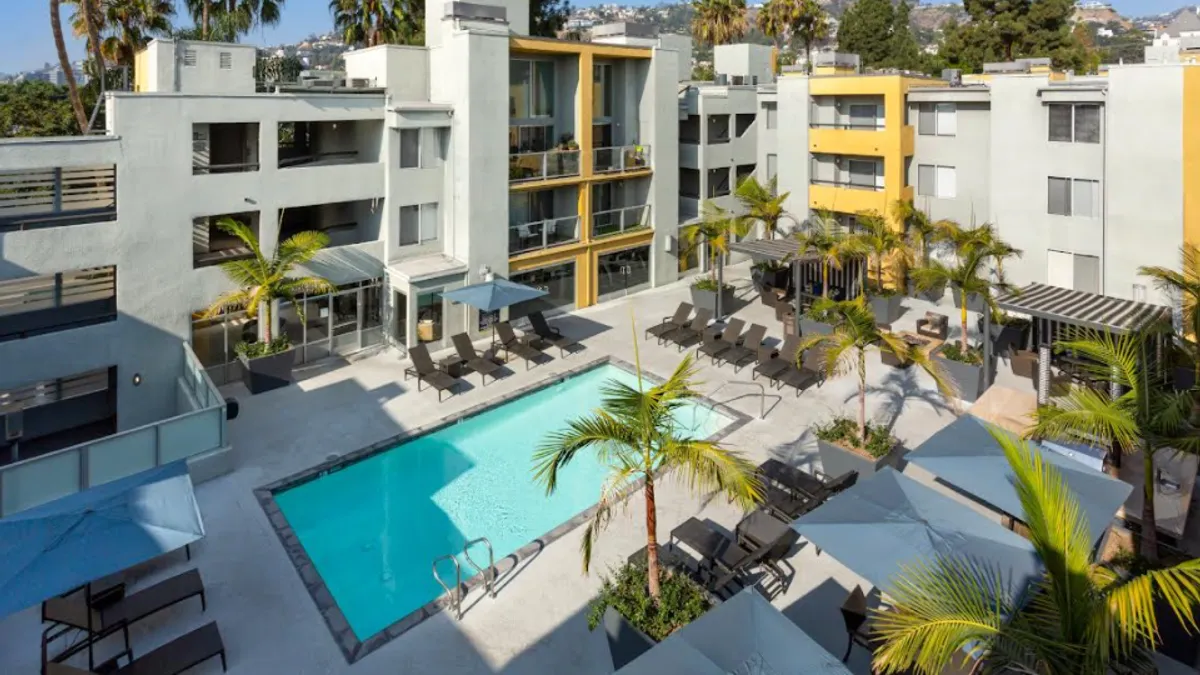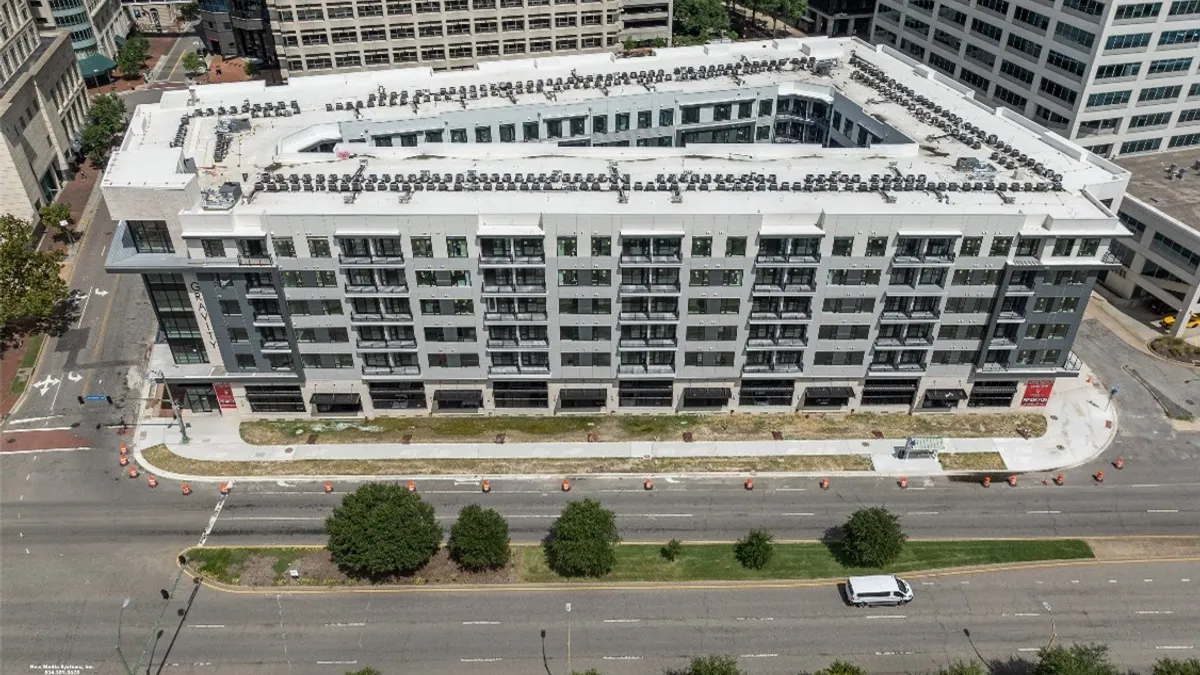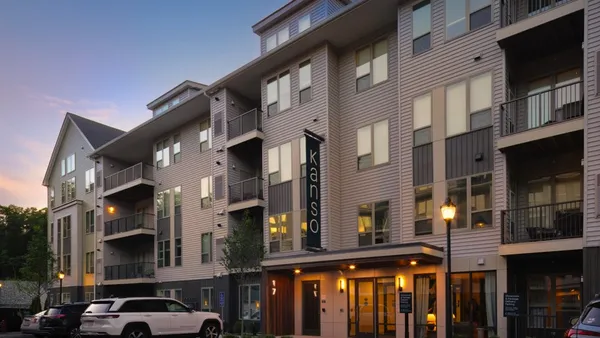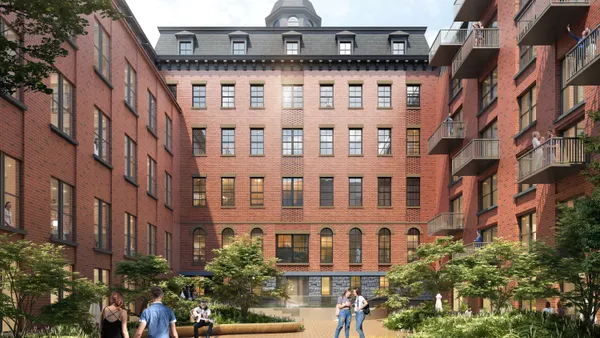Dive Brief:
- A partnership of Standard Communities and Faring has acquired two Los Angeles-area apartment properties, The Crescent at West Hollywood Apartments in West Hollywood and Millennium South Bay Apartments in Hawthorne, Calif.
- Both acquisitions leverage California’s innovative public-private partnership structure to enable the purchase of market-rate apartment communities and preserve them as middle-income workforce housing for income-qualified renters.
- Standard Communities and Faring founded the joint venture in August to create more than $2 billion of “missing-middle” housing across California, via ground-up development as well as acquisition of existing market-rate rental communities. Millennium South Bay and Crescent at West Hollywood are respectively the fifth and sixth middle-income transactions from Standard-Faring Essential Housing.
Dive Insight:
Standard Communities and Faring’s most recent transaction, announced Feb. 7, was the $100 million acquisition of Crescent at West Hollywood Apartments in Los Angeles (pictured above). Situated a quarter mile from the iconic Sunset Boulevard, the apartment community features 130 one- and two-bedroom residences ranging in size from 480 to 906 square feet. Apartments feature white quartz countertops in kitchens and baths, stainless steel appliances, walk-in closets, ceiling fans and vinyl wood flooring.
Constructed in 1985 on 1.7 acres, the five-story Crescent at West Hollywood offers amenities that include a swimming pool, spa, outdoor fireplace lounge, movie screening room, fitness center and barbecue areas. Capital expenditures budgeted at approximately $6 million are planned for the renovation of the property.
Normally, a sale like this results in rents being raised. The public-private partnership, which also included participants California Statewide Communities Development Authority (CSCDA) Community Improvement Authority and the City of West Hollywood, will instead transition the property’s 130 market-rate units to middle-income housing. That will allow income-qualified households earning up to 80 percent of area median income (AMI) to save as much as $1,200 per month in rent.
High costs
The initiative helps in the effort to create and preserve middle-income housing for essential workers and middle-income families. That’s an important step given West Hollywood has some of the highest costs of living in L.A. County, and its building costs are also substantial.
Standard Communities also partnered with Faring earlier this year to acquire the 230-unit Millennium South Bay Apartments in Hawthorne, California. The property changed hands for approximately $140 million, according to a press release. Upon closing, the owners set aside $17.5 million in cash reserves. This cushion was intended to maintain the property’s long-term operation and physical condition.
Millennium South Bay features studio to two-bedroom apartments measuring from 567 to 1,319 square feet in size. Among the community amenities are a clubhouse and lounge. Apartments offer granite countertops, stainless steel appliances and balconies.
“The average single-family home in Hawthorne is over $900,000, but the average salary for teachers, firefighters, police officers, and other essential workers is below $70,000,” said Jeff Jaeger, co-founder and principal of Standard Communities, in the release. “Creating this transit-oriented and mixed-use community for those middle-income essential workers will have a huge benefit for the City of Hawthorne.”
As the fifth and sixth middle-income housing transaction by Standard-Faring Essential Housing, the acquisitions of Crescent at West Hollywood Apartments and Millennium South Bay Apartments bring the JV’s total middle-income units acquired to 1,300.
Missing middle
The CSCDA Community Improvement Authority works to address California’s housing crisis, including the dearth of workforce housing for a population referred to as the “missing middle.”
This cohort is comprised of those whose earnings are too great to qualify for traditional affordable housing for residents earning less than 80 percent of AMI, but not significant enough to afford market-rate rental housing in the communities where they work.
Through CSCDA’s Community Improvement Authority, issuance of government bonds makes possible acquisition of market-rate apartment properties, after which the buildings are transitioned to income- and rent-restricted units for moderate and middle-income households. The individuals and families typically earn from 80 to 120 percent of AMI. Annual hikes in rents are capped at no more than 4 percent, and existing residents cannot be displaced under the program. The program has acquired and converted more than 7,500 units for low- and middle-income residents.
Click here to sign up to receive multifamily and apartment news like this article in your inbox every weekday.










